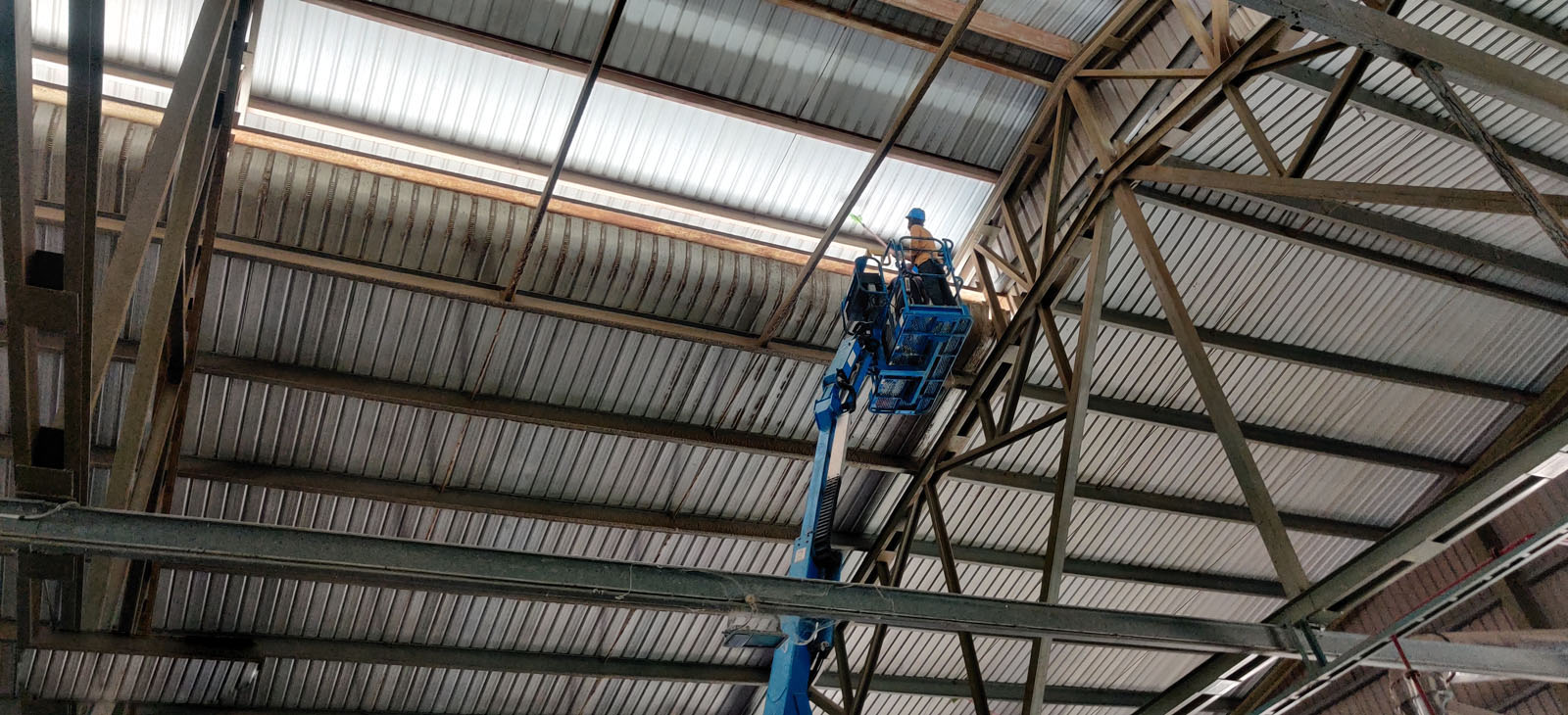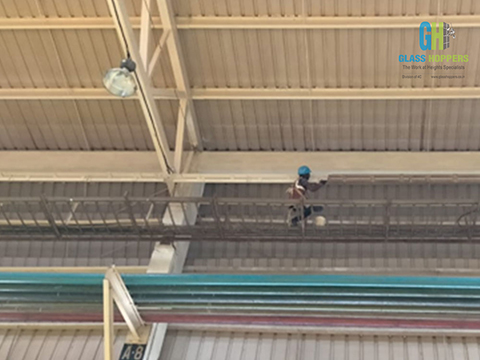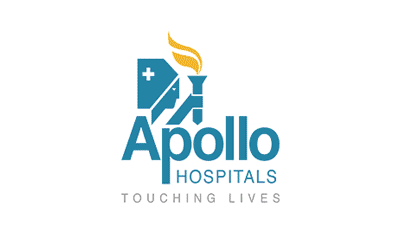Professional Protective Coating Services

4C' offer wide range of durable, reliable and cost-effective industrial coatings by team of experts to meet a variety of functional needs including:
- Protecting against rust, oxidation and corrosion
- Minimizing friction
- Protection from chemicals
- Easing assembly and disassembly
- Simplifying cleanup and providing non stick properties
On-time completion, which is our speciality, is met for every job through our team's detailed specification analysis, state-of-the art equipments and effective modern coating techniques.
Our range of Industrial Protective Coatings:
- Non-stick Teflon Coating - For superior scratch and chemical resistance
- Ceramic Epoxy Coating - An exclusive abrasion resistant coating that protects by binding ceramic particles to a resin system
- PTFE Coating - An unique non-stick kind of coating, able to withstand high temperatures
- Lacquer Coating - A clear or coloured, wood finish that produces a hard, durable finish.
- Xylan Coating - To reduce friction, improve wear resistance, and for non-stick applications.
- Nano Coating - Provides liquid repellent surfaces.
- Pu (Polyurethane) Coating - To provide exceptional weathering performance characteristics to its substrate.
- Coal Tar Epoxy - Inexpensive protective coating, consisting of tar, fillers, a gelling.
- Elastomeric Coating - Waterproofing solution for stucco, walls and roof.
- Aluminium Coating
- Metallic Coating
- Rubber Coating For Metal
Non stick Coatings
Teflon coating
PTFE (Polytetrafluoroethylene) coating: PTFE or Polytetrafluoroethylene has one of the lowest coefficients of friction against any solid, and used as a non-stick coating. Thus PTFE coated products provide good scratch and chemical resistance, can withstand highest operating temperature. For it's very non-reactivity, is often used in containers and pipework for reactive and corrosive chemicals. PTFE is available only in water-based liquid form.
FEP (Fluorinated Ethylene Propylene Copolymer) nonstick coating: FEP (fluorinated ethylene propylene copolymer) is also a non-stick coating. It differs from the PTFE (polytetrafluoroethylene) resins in that it is melt-processable using conventional injection molding and screw extrusion techniques. FEP is softer than PTFE but share it's useful properties of low friction and non-reactivity.
PFA (Perfluoroalkoxy) Nonstick Coating: PFA non stick coating resins are relatively newer fluorocarbon resin products which has outstanding chemical resistance. PFA non stick coating is chemically inert to strong mineral acids, inorganic oxidizers also has resistance to organic compounds includes acids, anhydrides, aromatics, alcohols, ethers, chlorocarbons, fluorocarbons etc. With the ability to reach 0.010 inch or more thickness, chemical penetration can be significantly retarded, thus is widely applied in food processing, where cleaning wash-down may include acids, bases, and oxidizing agents.
ETFE: ETFE, Ethylene tetrafluoroethylene, a fluorine based plastic, has a relatively high melting temperature, excellent chemical, electrical resistance. ETFE mostly used for roofs for its high-energy radiation resistance which can withstand moderately high temperatures for a long period of time. In architecture, it is used in sheet form, which is able to stretch to three times its length without loss of elasticity. Employing heat welding, tears can be repaired with a patch or multiple sheets assembled into larger panels.
Ceramic coating
Ceramic coatings, have a significantly higher level of abrasion resistance than most metals, thus can be applied to metal components to enhance their functional properties. They are also capable of maintaining their integrity under severely elevated temperatures, sometimes up to 4,500 degrees Fahrenheit. Ceramic coatings are widely used by many industries like Oil and gas, Steel, Textile, Pump, Plastics, Canning industry etc.
Benefits of Ceramic Coating:
- Hardness
- Low friction
- Corrosion protection from absolutely dense, pore free barriers
- Increases bond strength
- Extraordinary wear resistance
- Can be applied to complicated geometries and internal bores
- No measurable buildup on top of the plating/coating
- No pre-grinding required
- Increases plating/coating life by 4 to 10 times in most corrosive environments
- Resistant to thermal cycling/shock
- Electrical resistivity
Lacquer Coating
Lacquer is a sort of solvent-based product that is made by dissolving nitrocellulose together with plasticizers and pigments in a mixture of volatile solvents. Lacquer is a clear or coloured, wood finish that produces a hard, durable finish. This finish can be of any sheen level from ultra matte to high gloss.
Xylan® Coating
Xylan® Coating, is a fluoropolymer-based industrial coating, is generally used to reduce friction, improve wear resistance, and for non-stick applications. Xylan® coatings contain PTFE or other types of lubricants and are applied in thin films. It has been used extensively in the automotive industry and for corrosion protection in the oil and gas industry.
Nano coating
Nano coating, is an application of nanostructures on surfaces which make the surface liquid repellent. The functional method of the nanotechnology systems is based on a natural phenomenon - the so called Lotus-Effect. Nano coating protects almost any surface to products across the following key market sectors: Electronics, Lifestyle, Life Sciences, Filtration & Energy, and Military & Institutional.
Polyurethane coating (PU or PUR Coating)
Polyurethane (PUR and PU) is a polymer composed of organic units joined by carbamate (urethane) links. PU coating provides a thin film, high gloss finish over any coated meterial. Polyurethane coating provides exceptional weathering performance characteristics to its substrate. The products have been effective because of their outstanding life expectancy and performance, resistance to aggressively corrosive environments, high abrasion resistance, fast application, low and cold temperature curing capability, strong adhesion, unlimited film build, and compliance with the most rigorous regulations on volatile organic compound (VOC) emissions. Thus PUR Coatings are recommended for application to surfaces subject to high levels of wear-and-tear. Polyurethane coatings are protecting many different structures, like water and sewage water tanks, chemical storage tanks, gas and oil pipelines, bridges, ships etc. Polyurethanes are also used as surface sealants and surface coatings etc where excellent chemical/physical resistance is required.
Coal tar epoxy coating
Coal tar epoxy coating is a protective coating consisting of tar, fillers, a gelling agent, and a curing agent. Epoxy resins allow for expansion and contraction in coal tar epoxy applications. A key advantage of coal tar epoxies is its ability to bond to oily surfaces, thus making it suitable for painting onto garage floors or applying on underground petroleum tanks and pipelines. Coal Tar epoxies are inexpensive compared to most non-coal tar epoxies.
Elastomeric coatings
Elastomeric coatings are higher volume solids (40-55%) than conventional paints, and are applied in films that typically attain a dry film thickness in the range of 10-20 mils per coat (versus conventional paints with a DFT of 2-3 mils). Elastomeric coatings are used as a waterproofing solution for stucco, which is a relatively rough surface that tends to crack. Elastomerics films can tolerate some substrate movement; and their stretchiness (150-350% without breaking throughout their service life) allows them to fill or bridge even moving hairline cracks.
Excellent elongation property of Elastomeric provides best solution as roof coating as it can maintain a watertight seal even while the roof expands and contracts. Also it can reduce the heat of the inside of the building as Elastomeric roof coatings can reflect up to 90% of the heat from the sun. Emergency roof repairs can be done with elastomeric roof coatings, and can be permanent and don't need to be removed when it is time to restore the entire roof.





